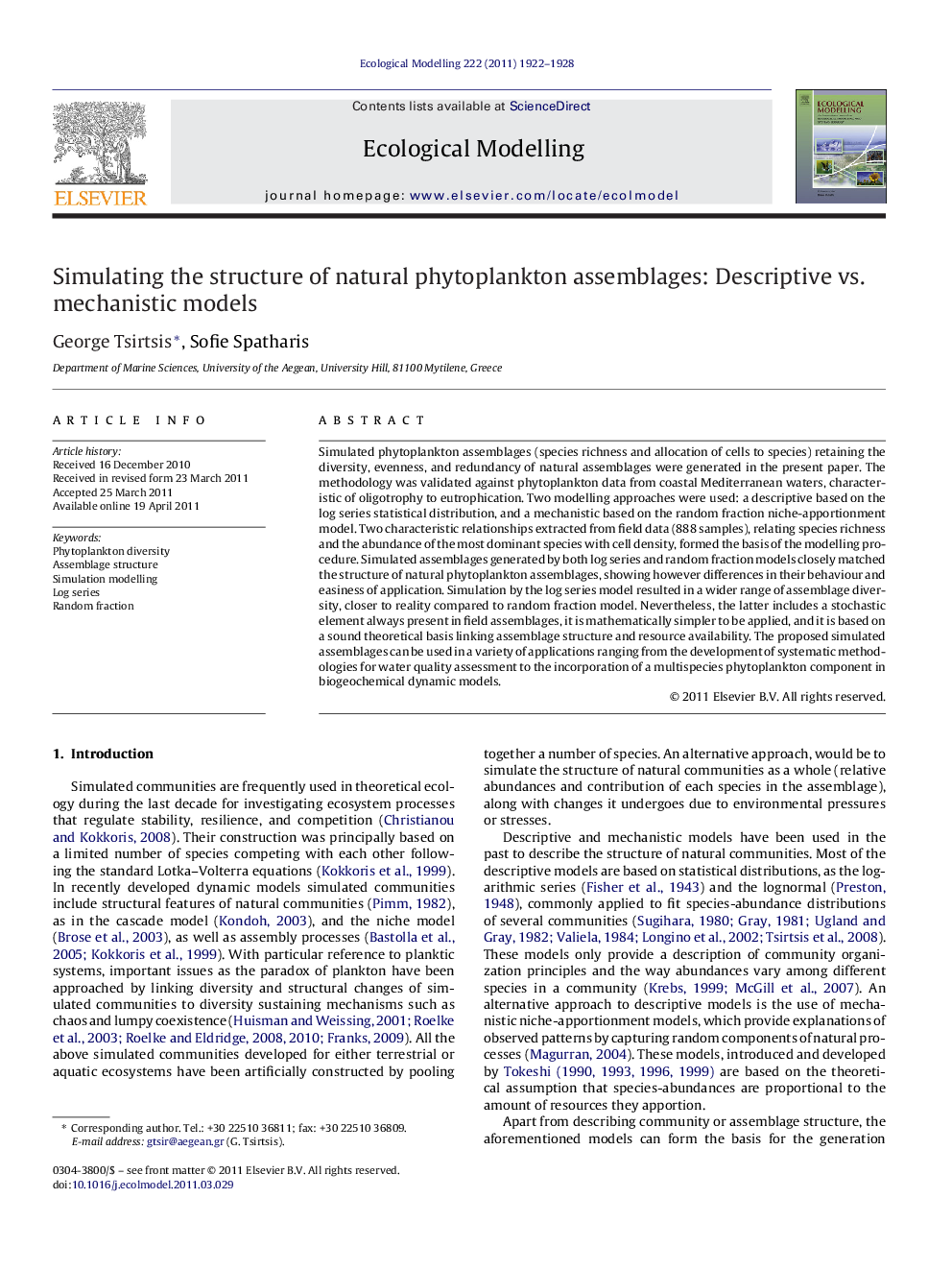| Article ID | Journal | Published Year | Pages | File Type |
|---|---|---|---|---|
| 4376844 | Ecological Modelling | 2011 | 7 Pages |
Simulated phytoplankton assemblages (species richness and allocation of cells to species) retaining the diversity, evenness, and redundancy of natural assemblages were generated in the present paper. The methodology was validated against phytoplankton data from coastal Mediterranean waters, characteristic of oligotrophy to eutrophication. Two modelling approaches were used: a descriptive based on the log series statistical distribution, and a mechanistic based on the random fraction niche-apportionment model. Two characteristic relationships extracted from field data (888 samples), relating species richness and the abundance of the most dominant species with cell density, formed the basis of the modelling procedure. Simulated assemblages generated by both log series and random fraction models closely matched the structure of natural phytoplankton assemblages, showing however differences in their behaviour and easiness of application. Simulation by the log series model resulted in a wider range of assemblage diversity, closer to reality compared to random fraction model. Nevertheless, the latter includes a stochastic element always present in field assemblages, it is mathematically simpler to be applied, and it is based on a sound theoretical basis linking assemblage structure and resource availability. The proposed simulated assemblages can be used in a variety of applications ranging from the development of systematic methodologies for water quality assessment to the incorporation of a multispecies phytoplankton component in biogeochemical dynamic models.
► We generated simulated phytoplankton assemblages closely matching natural ones. ► Log series descriptive model generates assemblages of wider diversity range. ► Random fraction mechanistic model is mathematically simpler to apply. ► Dominance in phytoplankton assemblages is crucial for the simulation process. ► The proposed methodology has a wide range of applications in ecology.
